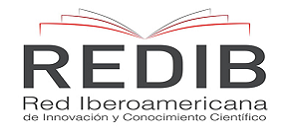Gamification as a teaching method in physical education classes
Keywords:
Gamification, Physical Culture, Method, Teaching and LearningAbstract
Objective: To determine the importance of gamification in the teaching-learning process in physical education classes.
Methods: This study used the descriptive-quantitative type with a non-experimental transversal design. The data are collected in a single moment and carried out in the Unidad Educativa Particular Latinoamericano (30 third-year students).
Results: A total of 40% of the sample knew about gamification. The most relevant educational models that the physical culture teacher applies are the SARM model with a 63.3% and conductive 26.7%. The applications used in teachers' classes are online games with 36.7%, the Quiz program 26.7%, and Genially 20%. The mental state of the students was raised by 80% when they received the classes by applying ICTs.
Conclusions: Gamification as a method of teaching in physical culture classes enhances attention, dynamism, competitiveness, enthusiasm to continue learning by completing more significant learning, strengthening physical, conditional and psychological coordination, and generating more recreational and playful spaces.
Downloads
References
Coello, L., & Gavilanes, B. (2019). La gamificación del proceso de enseñanza aprendizaje significativo [Thesis]. Universidad de Guayaquil.
Escaravajal, J., & Acosta, F. (2019). Análisis bibliográfico de la gamificación en Educación Física. Revista Iberoamericana de Ciencias de La Actividad Física y El Deporte, 8(1), 97-109. https://doi.org/10.24310/riccafd.2019.v8i1.5770
Escaravajal, J., & Acosta, F. (2019). Análisis bibliográfico de la gamificación en Educación Física. Revista Iberoamericana de Ciencias de La Actividad Física y El Deporte, 8(1), 97-109. https://doi.org/10.24310/riccafd.2019.v8i1.5770
Fernández, J. (2019). Gamificando la educación física. De la teoría a la práctica en educación primaria y secundaria. Servicio de Publicaciones de la Universidad de Oviedo.
Fernández, J. (2019). Gamificando la educación física. De la teoría a la práctica en educación primaria y secundaria. Servicio de Publicaciones de la Universidad de Oviedo.
Freire, P. (2014). Pedagogía da autonomía. Paz e Terra S.A.
Freud, S. (1993). Más allá del principio del placer. Amorrortu.
Gómez, M. (2019). La gamificación como estrategia creativa para la enseñanza de la ortografía [Bachelor’s thesis]. Universidad Central del Ecuador. Retrieved from http://www.dspace.uce.edu.ec/handle/25000/19933
González, C. V. (2020). Herramientas TIC para la gamificación en Educación Física. Edutec. Revista Electrónica de Tecnología Educativa, 71, 67-83. https://doi.org/10.21556/edutec.2020.71.1453
González, V., & Jarrín, S. (2021). La gamificación en el proceso de enseñanza-aprendizaje de la Educación Física. Revista Arbitrada Interdisciplinaria Koinonía, 6(2), 258-270.
Guevara, G., Verdesoto, A., & Castro, N. (2020). Metodologías de investigación educativa (descriptivas, experimentales, participativas, y de investigación-acción). RECIMUNDO, 4(3), 163-173. https://doi.org/10.26820/recimundo/4.(3).julio.2020.163-173
Hernández, K., & Mayorga, A. (2022). La gamificación como recurso didáctico para las clases de Educación Física universitaria. Podium. Revista de Ciencia y Tecnología en la Cultura Física, 17(2), 796-809.
Plaza, M. (2022). El Potencial de la gamificación aplicado al ámbito educativo. Anagrama.
Ramos, E., & Díaz, I. (2022). Tendiendo puentes hacia la gamificación en educación física: Una experiencia en el aula de primaria. Acciónmotriz, 29, 126-140.
Rodríguez, Á., Cañar, N., Gualoto, O., Correa, J., & Morales, J. (2022). Los beneficios de la gamificación en la enseñanza de la Educación Física: Revisión sistemática. Dominio de las Ciencias, 8(2), 662-681. https://doi.org/10.23857/dc.v8i2.2668
Sánchez, E., Ávila, C., García, D., & Bravo, W. (2020). El proceso de enseñanza-aprendizaje de la Educación Física en época de pandemia. Polo del Conocimiento, 5(11), 455-467. https://doi.org/10.23857/pc.v5i11.1936
Sánchez, M., & Morales, K. (2021). La gamificación en las clases de educación física (Bachelor’s thesis). Universidad Técnica de Ambato. Retrieved from https://repositorio.uta.edu.ec:8443/jspui/handle/123456789/33397
Sousa, D., Lima, M., & Reis, T. (2022). Gamificación, “No tengo ni idea de lo que es”: Un estudio en la Formación Inicial del Profesorado de Educación Física. Alteridad. Revista de Educación, 17(1), 12-23. https://doi.org/10.17163/alt.v17n1.2022.01
Yildiz, K., Güzel, P., & Zerengök, D. (2019). Un enfoque teórico para el uso de las tecnologías de la información y la comunicación en la Educación Física. SPORT TK-Revista EuroAmericana de Ciencias del Deporte, 8(2), 81-87. https://doi.org/10.6018/sportk.391801
Zapata, Z. (2019). Estrategias metodológicas de la gamificación en el aprendizaje [Bachelor’s Thesis]. Universidad de Guayaquil. Retrieved from http://repositorio.ug.edu.ec/handle/redug/45399
Downloads
Published
How to Cite
Issue
Section
License
Copyright and Licensing
For all articles published in Atena Journals, copyright is retained by the authors. Articles are licensed under an open access Creative Commons CC BY 4.0 license, meaning that anyone may download and read the paper for free. In addition, the article may be reused and quoted provided that the original published version is cited. These conditions allow for maximum use and exposure of the work, while ensuring that the authors receive proper credit.
Reproducing Published Material from other Publishers
It is absolutely essential that authors obtain permission to reproduce any published material (figures, schemes, tables or any extract of a text) which does not fall into the public domain, or for which they do not hold the copyright. Permission should be requested by the authors from the copyrightholder (usually the Publisher, please refer to the imprint of the individual publications to identify the copyrightholder).
Permission is required for:
- Your own works published by other Publishers and for which you did not retain copyright.
- Substantial extracts from anyones' works or a series of works.
- Use of Tables, Graphs, Charts, Schemes and Artworks if they are unaltered or slightly modified.
- Photographs for which you do not hold copyright.
Permission is not required for:
- Reconstruction of your own table with data already published elsewhere. Please notice that in this case you must cite the source of the data in the form of either "Data from..." or "Adapted from...".
- Reasonably short quotes are considered fair use and therefore do not require permission.
- Graphs, Charts, Schemes and Artworks that are completely redrawn by the authors and significantly changed beyond recognition do not require permission.
Obtaining Permission
In order to avoid unnecessary delays in the publication process, you should start obtaining permissions as early as possible. If in any doubt about the copyright, apply for permission. Atena Journals cannot publish material from other publications without permission.
The copyright holder may give you instructions on the form of acknowledgement to be followed; otherwise follow the style: "Reproduced with permission from [author], [book/journal title]; published by [publisher], [year].' at the end of the caption of the Table, Figure or Scheme.














